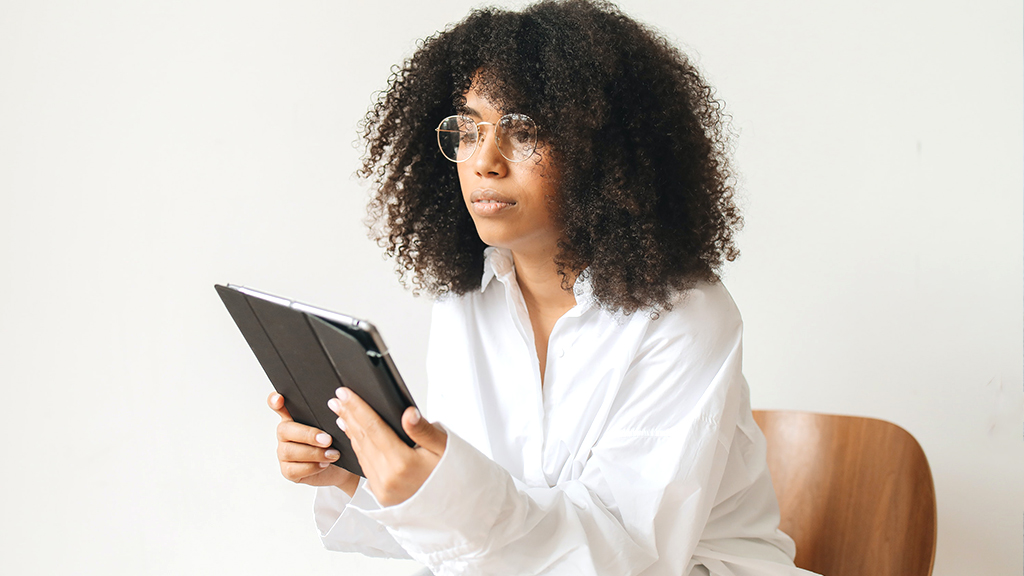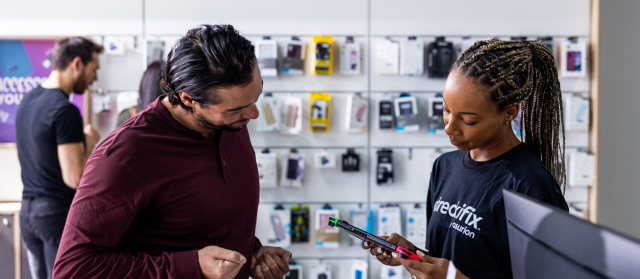Fast fix:
If your iPad® battery is draining fast, start with Low Power Mode and Background App Refresh. Low Power Mode reduces what’s running behind the scenes so your battery lasts longer, while turning off Background App Refresh stops apps from updating when you’re not using them. You’ll find both in Settings > Battery and Settings > General > Background App Refresh.
You’re in the middle of streaming your favorite show or working on an important project when suddenly, your iPad battery plummets to zero. It’s frustrating—but don’t worry, we’re here to help. At Asurion, when tech breaks, we fix it. Here are our tips for what to do when your iPad battery is draining quickly. If you need help along the way, we’re here for you—visit your nearest uBreakiFix® by Asurion store for a free diagnostic.
Why your iPad battery drains fast
There are a few common culprits that can make your battery run down quicker than you expect:
- An app or Background App Refresh is draining the battery
- Your iPad needs a software update
- Your screen is too bright
- A minor software glitch is running things in the background
Whether you're dealing with one of these issues or something else, here are some troubleshooting steps to try. If you walk through them all and your battery is still not performing as it should, it may be time for an iPad battery replacement.
Try these fixes
Walk through these steps in order—the early ones usually make the biggest difference.
Turn on Low Power Mode
This setting reduces background activity, dims your display, and cuts down on animations so your battery lasts longer. Go to Settings > Battery, then turn on Low Power Mode.
Check your iPad battery usage
Your iPad keeps track of which apps use the most power so you can spot problem apps. Go to Settings > Battery and check Battery Usage by App. If something you rarely use is at the top, update it, limit its background activity, or remove it.
Check your iPad battery health
Over time, batteries lose capacity. To see how yours is doing, go to Settings > Battery > Battery Health. As the battery ages and the number of charging cycles increases, this percentage might slightly decrease. If you notice significant degradation, it might be time to consider a battery replacement.
Turn off Background App Refresh
When this is on, apps update themselves even when you’re not using them—great for convenience, bad for battery life. Go to Settings > General > Background App Refresh and turn it off for apps that don’t need to refresh in the background.
Check for software updates
Updates often include performance improvements and bug fixes that can help your battery. Plug in and connect to Wi-Fi, then go to Settings > General > Software Update. Turn on Automatic Updates so you always have the latest version.
Reduce the brightness of your screen
The brighter the display, the faster the battery drains. Go to Settings > Display & Brightness and slide the Brightness bar lower. You can also switch Appearance to Dark for a more power-friendly look.
Turn on Reduce Motion
Animations and screen effects might look nice, but they use extra power. Go to Settings > Accessibility > Motion > Reduce Motion, then turn it on to keep things simpler and save battery.
Turn on or adjust Auto-Lock
Auto-Lock turns off your display when you’re not using it, helping you avoid unnecessary power drain. Go to Settings > Display & Brightness > Auto-Lock and choose 5 minutes or less—just don’t set it to Never.
Turn off Wi-Fi and Bluetooth when you don’t need them
If you’re not using them, both Wi-Fi and Bluetooth keep scanning in the background, which uses battery power. Open Control Center and turn them off until you need them again.
Turn off Location Services for power-hungry apps
Some apps constantly check your location, which uses extra energy. Go to Settings > Privacy > Location Services, tap an app, and choose Never or While Using to limit how often it can access your location.
Restart your iPad
Restarting clears minor glitches and refreshes system processes without erasing anything.
- iPad without a Home button: Press and hold Top + either Volume button, then drag the slider.
- iPad with a Home button: Press and hold Top, then drag the slider. Wait ~30 seconds, then press Top to turn it back on.
Force restart your iPad
If your iPad is frozen or unresponsive, a force restart will make it reboot even when normal restart methods don’t work. It won’t erase your data.
- With a Home button: Press and hold Top + Home until you see the Apple® logo.
- Without a Home button: Press Volume Up, press Volume Down, then press and hold Top until the Apple logo appears.
Complete a factory reset
If nothing else works, resetting your iPad can fix stubborn battery issues by wiping it clean and starting fresh. Back up first with how to back up data on your tablet, then follow how to reset an iPad to factory settings.
If your iPad is getting unusually warm—heat can speed up battery drain—check out iPad getting hot? Here’s how to fix it.
If you’ve tried all of these steps and your iPad battery is still draining fast, the issue could be hardware-related and require help from a pro. Bring it to your nearest uBreakiFix® by Asurion store for fast, hassle-free repairs.
FAQ
Does Low Power Mode harm my iPad battery?
No—Low Power Mode simply reduces background activity and visual effects. It won’t damage your battery and is safe to use anytime you need to stretch a charge.
Does Dark Mode really save battery on iPad?
Yes, especially in apps with dark or black backgrounds where fewer pixels need to light up. It’s not a magic fix, but combined with lower brightness it helps.
How can I tell which app is draining my battery?
Open Settings > Battery and check Battery Usage by App. If an app is unusually high, update it, limit Background App Refresh, or remove it.
What’s a normal amount of battery drain?
It varies by model and use. Streaming, gaming, and navigation drain faster than reading or note-taking. If your iPad can’t make it through typical light use, try the steps above.
When should I consider a battery replacement?
If Battery Health shows significant capacity loss or you still see rapid drain after these fixes, it’s time to have a pro evaluate the battery. Our techs can test it and replace it if needed.

